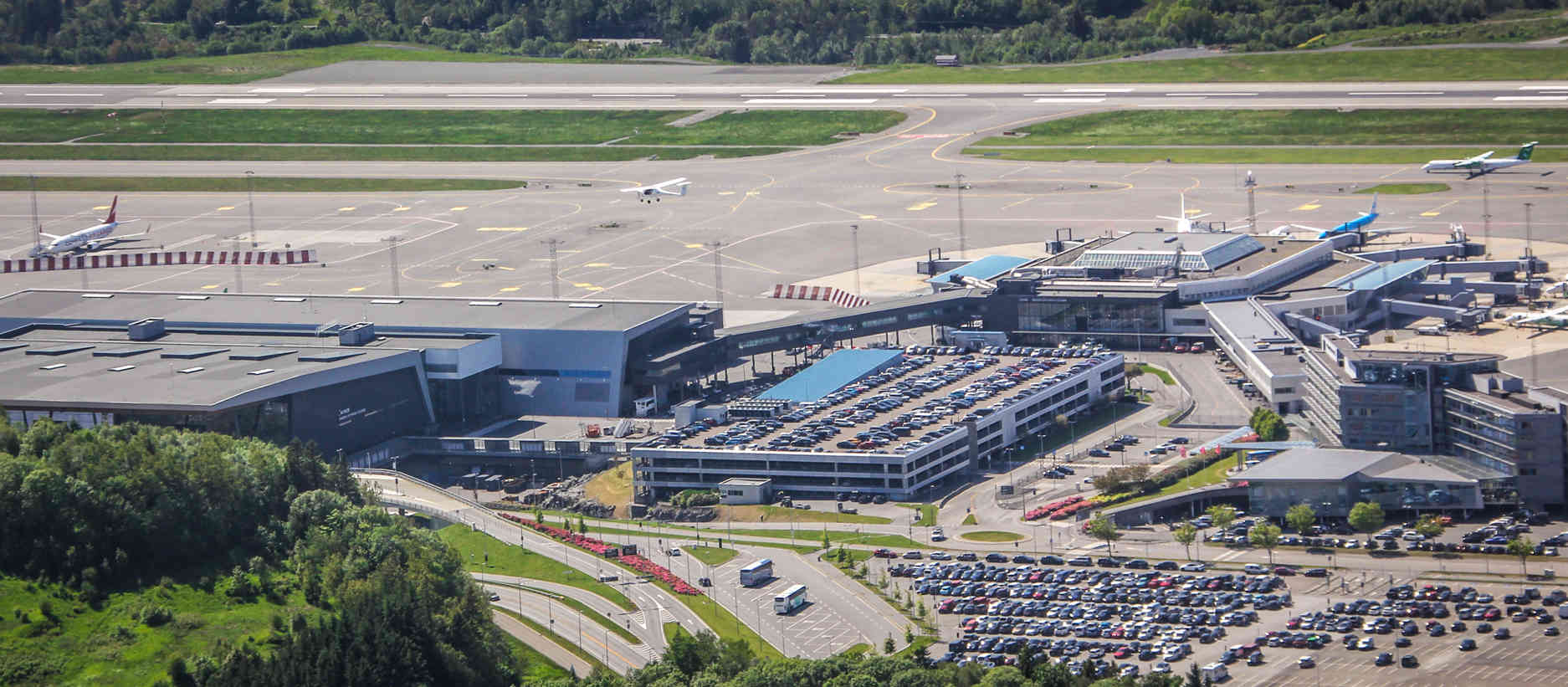Avinor shall be a driving force in environmental work in aviation.
The following main goals are defined in Avinor's 2011-2015 Strategic plan:
Greenhouse gas emissions
Avinor shall reduce total GHG emissions under its own control in the period 2012-2015, regardless of traffic growth, and be a driving force in reducing overall GHG emissions from Norwegian aviation.
Measures:
- Prepare and execute a climate action plan
- Reduce emissions from our own activities, including our vehicles, fire training, use of energy in buildings, runway de-icing, business travel and commuting.
- Avinor will guide external stakeholders and help to reduce their emissions from activities at our airports, including aircraft de-icing, ground transport services, waste transport, ground operations, landing/take-off and aircraft movements on the ground.
- ACA certification of airports
- Drive efforts to study biofuels for aviation.
Aircraft noise
No increase in the number of residents exposed to outdoor noise levels from aircraft and helicopters exceeding Lden 60 dB and Lnight 55 dB.
Measures:
- Prevent noise by helping to improve planning and operations
- Avoid construction of new homes in the red noise zone (unsuitable for noise sensitive use) and in the inner areas of the yellow noise zone (assesment zone)
- Provide updated noise zone maps that give the best possible description of the current noise situation and future changes in the noise situation
- Actively monitor municipal planning with input and advice, particularly in populated areas.
- Adjust operative procedures including altitude, speed and route
- Avinor is an active international partner in the prevention of aircraft noise, including via Airport Council International (ACI).
Discharges to water and soil
Avinor shall not violate discharge permits. De-icing, fire drills and fuelling entail a risk of discharge.
Measures:
- All airports have valid discharge permits.
- Avinor applies the "precautionary principle" and works in a risk-based manner in order to avoid negative environmental impacts and prevent pollution.
- Use the least environmentally harmful chemicals on the market, particularly for de-icing fluids and fire-fighting foam
- Conduct soil contamination, mapping and risk analyses
- Carry on environmental monitoring activities.
Consumption of products and materials
Avinor shall choose products and materials with the least possible impact on the environment in a lifetime perspective.
Measures:
- Include environmental considerations in procurement
- Environmental criteria shall be weighted highly in any framework agreement affecting Avinor's environmental aspects.
- Address sustainability and environmental impact from a life cycle perspective - Set clear environmental standards for each product category
- Work systematically with substitution and reduction of the number of chemical products.
Waste
Avinor shall achieve a source separation rate of 60%. Avinor shall minimise the amount of waste and optimise the share of sorted waste.
Measures:
- Each airport shall prepare waste management plans, and assess their own goals for sorting.
- Central waste disposal agreement focusing on sorting waste and improved waste management
- Extensive and comprehensive reporting of waste volumes, sorting rates and greenhouse gas emissions
- Avinor is a member of Green Dot Norway (Grønt Punkt Norge), which requires the company’s Norwegian suppliers to join the same scheme or a similar one for ensuring the collection and recycling of used packaging material.
Energy consumption
Avinor’s total energy consumption in buildings (excluding OSL) shall be cut by 25 per cent in 2015 compared with energy consumption in 2010
Measures:
- Develope and implemet an action plan for energy reduction measures
- Phasing out fossil fuels and transit to renewable energy solutions
- Have high standards for energy-efficient solutions in development projects
- Use of "Green IT" for smart solutions for resource management, power consumption, cooling, ensure good environmental gains in transport and logistics etc.
Other environmental objectives:
Cultural monuments and cultural environments
Avinor shall work to preserve cultural monuments and environments at the airports. Landscape conservation plans shall be safeguarded where such monuments and environments exist.
Measures:
- Avinor shall work to preserve cultural monuments and environments at the airports.
- Landscape conservation plans have been prepared for six airports.
Impact on landscape and the natural environment
Avinor shall help to protect biodiversity at the airports, and minimise negative impacts on the natural environment and species diversity.
Measures:
- Identify and keep track of natural values at the individual airports
- Develop and implement a comprehensive plan for the management of particularly valuable natural areas
- Incorporate and weigh natural environment and landscape interests in relation to long-term development of airports in the preparation of airport plans
Emissions to air
Local air quality at the airports is affected by air traffic, ground vehicles, buildings and other activities.
Measures:
- Environmental standards for airports' ground transport services
- Utilise economic management means to increase the share of public transport
- Facilitate the introduction of low-emission vehicles (e.g. electric taxis, hydrogen buses etc.) and stipulate emission level requirements.
